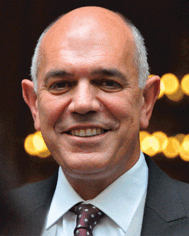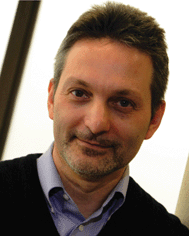Coinage metals in organic synthesis
Antonio M.
Echavarren
ab,
Ning
Jiao
c and
Vladimir
Gevorgyan
d
aInstitute of Chemical Research of Catalonia (ICIQ), Barcelona Institute of Science and Technology, Av. Països Catalans 16, 43007 Tarragona, Spain. E-mail: aechavarren@iciq.es
bDepartament de Química Analítica i Química OrgànicaUniversitat Rovira i Virgili, C/ Marcel·li Domingo s/n, 43007 Tarragona, Spain
cState Key Laboratory of Natural and Biomimetic Drugs, School of Pharmaceutical Sciences, Peking University, Xue Yuan Rd. 38, Beijing 100191, China. E-mail: jiaoning@pku.edu.cn; jiaoning@bjmu.edu.cn
dDepartment of Chemistry, University of Illinois at Chicago, 845 W Taylor St., Room 4500, Chicago, Illinois 60607, USA. E-mail: vlad@uic.edu
Coinage metals are among the major players in modern catalysis. Of these metals, copper has enjoyed applications in synthesis for the longest time. Having started with “classical” syntheses more than a century old such as the Sandmeyer reaction and Ullmann coupling, and the half-century old Kharash oxidation, nowadays copper spans across nearly all fields of catalysis, including addition, cycloaddition, cycloisomerization, cross-coupling and C–H functionalization reactions. Undoubtedly, due to its abundance, low cost, and versatility, copper is one of the most used metals in catalysis, not only among coinage metals, but also throughout the entire periodic table. Silver has been traditionally used as an additive for halogen scavenging and a counterion exchange agent, as well as a base in reactions catalysed by other transition metals. Compared with other transition metals, silver has been long believed to have a low catalytic efficiency, and most commonly it is used as either a cocatalyst or a Lewis acid. However, new Ag catalytic systems have been discovered in recent years and individual catalytic systems now include cycloisomerisations, cycloadditions, oxidations, C–H activation, and other organic transformations.
Although gold in catalysis has the shortest history, triggered by the discovery of its catalytic activity, it has enjoyed the sharpest burst of interest witnessed in the last couple of decades. This has been associated with an array of new reactivity being uncovered and thus with the development of a vast number of new transformations. Initially starting with addition, cycloaddition, and cycloisomerization reactions involving alkynes and alkenes, gold catalysis is now successfully used for cross-coupling, C–H functionalization, oxidation, hydrogenation, and many other transformations. Substantial progress has also been achieved in the development of highly stereoselective gold-catalysed transformations for organic synthesis. This thematic issue summarizes the recent progress on the aforementioned topics and others in coinage metal catalysis.
Leading scientists have contributed seven reviews and two tutorial reviews to this themed issue. Shunsuke Chiba et al. (DOI: 10.1039/c5cs00882d) focus on recent advances in Cu-catalysed (anaerobic) oxidative carbon–heteroatom bond formation at ubiquitous sp3 and sp2 C–H bonds as well as alkenes, classified according to the type of stoichiometric oxidant. This review is significant to streamline the multi-step molecular transformations needed for the synthesis of target functional molecules. The multifarious reaction modes enabled by copper catalysts are summarized in this review. The authors also indicate that more challenges and opportunities still remain to elucidate the detailed reaction mechanisms and improve the catalytic efficiency. Ilan Marek's contribution (DOI: 10.1039/c5cs00897b) firstly presents a brief introduction on the carbocupration of alkynes to guide readers on the basic principles. The following content is a comprehensive review of the copper mediated carbometalation of strained alkenes, mainly cyclopropenes, which has received much attention over the last decade. The highly selective construction of poly-substituted cyclopropanes, which can be transformed into acyclic derivatives bearing one or multiple tertiary or quaternary carbon stereocenters, is easily realized via the copper mediated carbometalation of cyclopropenes.
In this themed issue, there are three reviews on silver catalysed organic reactions. Ning Jiao and co-authors (DOI: 10.1039/c6cs00107f) provide a comprehensive review on Ag-catalysed C–H/C–C bond functionalization. In this review, the authors focus on the development of Ag-catalysed C–H/C–C bond functionalization, and the corresponding mechanisms are discussed. Meanwhile, it is emphasized that there are still many challenges and problems in this field. For instance, achieving low loadings of silver catalytic systems and the development of new catalytic systems with increased reactivity or selectivity under mild conditions with a wide substrate scope will have important implications for the practical application of these transformations. On the other hand, detailed mechanistic investigations of these reactions and the future development of novel reactions are expected to be conducted. The other two contributions on silver-catalysed reactions are provided by Daesung Lee (DOI: 10.1039/c5cs00835b) and Tohru Yamada (DOI: 10.1039/c5cs00895f) and their respective co-authors. Since the initial discovery, various methods have been developed for the preparation of benzyne and structurally more complex arynes, which are unique aromatic species with versatile reactivities. The tutorial review entitled “Reactions of arynes promoted by silver ions” contributed by Daesung Lee describes all known reactions of arynes promoted by silver-based reagents and catalysts, which will inspire further exploration of these unique species. An interesting review covering the topic of silver-catalysed carboxylation is contributed by Tohru Yamada and co-authors. In this review, recent studies of silver-catalysed carboxylation reactions using carbon dioxide are described. Unlike other transition metals, silver catalysts show significant reactivity for the sequential carboxylation and cyclization of alkyne derivatives with carbon dioxide. These advances have received much attention for the effective utilization of CO2 to synthesise heterocycles. Meanwhile, related silver-catalysed C–C bond forming strategies with CO2 have also provided synthetic pathways to the corresponding carboxylic acid derivatives.
Homogeneous gold catalysis has experienced an explosive development since the beginning of this millennium. In this themed issue, there are three reviews and one tutorial review on gold catalysis in organic synthesis and catalysis. There have been over 50 reviews on homogeneous gold catalysis since 2004. However, in sharp contrast, there have been only four reviews focused on asymmetric gold catalysis. F. Dean Toste et al. (DOI: 10.1039/c5cs00929d) provide a review on enantioselective gold catalysis over the past five years (ca. 2011–2015). To fully profile specific reactions, a brief description of related previous work is provided. The discussion is based on the different activation modes by gold(I) complexes, in the order of alkyne activation, allene activation, alkene activation and others. As the authors mention, despite the rapid development in enantioselective gold catalysis, this field is undoubtedly still in its infancy, especially in comparison to other traditional transition metal-based asymmetric catalysis (e.g., Pd, Cu, Rh, Ni). Thus there is much room for the development of enantioselective gold catalysis in organic synthesis and catalysis. Ross A. Widenhoefer (DOI: 10.1039/c6cs00171h) highlights the recent advances in the synthesis of cationic gold carbene complexes and the direct detection of cationic intermediates generated via gold-catalysed enyne cycloaddition. This review provides insight into the natural and electronic structure of gold carbene/α-metallocarbenium complexes and the cationic intermediates generated via gold-catalysed enyne cycloaddition, which would stimulate the development of gold-catalysed reactions and related transformations. Stephen Hashmi (DOI: 10.1039/c6cs00023a) critically reviews gold-catalysed reactions of diynes undergoing a range of new types of reaction including rearrangements, carbene transfers, annulations, macrocyclisations or the formation of gold vinylidene intermediates. A tutorial review covering the topic of Au-catalysed oxidative cyclisation is contributed by Liming Zhang and co-authors (DOI: 10.1039/c5cs00887e). The two main strategies of Au-catalysed oxidative cyclisation which have been applied towards the development of a variety of valuable synthetic transformations are discussed in this tutorial review. Despite these advances, many new applications of these two strategies remain to be developed. In addition, the limitations of these strategies, e.g., low atom economy with regard to the nucleophilic oxidant in intermolecular cases, and the harsh nature of the required Au(I)/Au(III) catalysis, need to be addressed.
In this issue, we have collected the most recent applications of these three coinage metals as catalysts in organic synthesis and asymmetric catalysis. We hope that you will find it beneficial for your future research and teaching endeavours. Finally, we would like to thank all of the authors of this themed issue and the Royal Society of Chemistry editorial staff members for their invaluable contributions.
| This journal is © The Royal Society of Chemistry 2016 |



